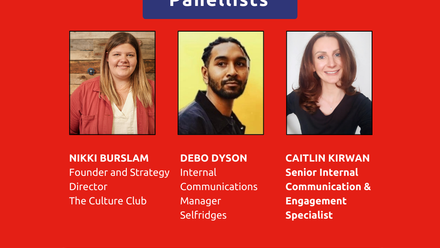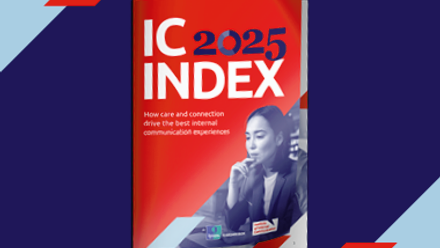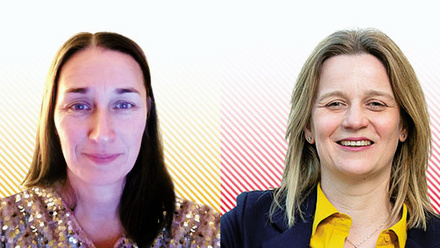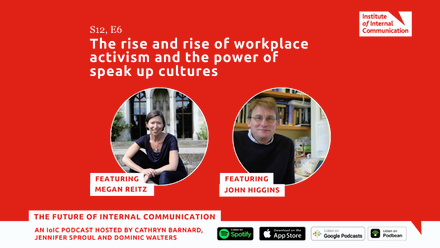How to build an external brand – internal comms first
In the past 12 months, we’ve seen some exciting, empowering and also horrifying examples of what employees – at all levels of an organisation – can do to unseat the most powerful businesses.
This is the time of #MeToo, Google walk-outs and people previously marginalised within their organisations taking back control.
At Golin, we have spearheaded Have Her Back in a move to force PR and advertising agencies to invest in female creative directors, after decades of marginalisation.
We set off on this mission because we were encountering too many awesome women who seemed astonished that we wanted to hire them. They entered an interview process expecting to lose because they had taken time out of the workplace to bring up children. And the result was our industry was losing out on talent and failing to deliver our best creative because it often wasn’t representative of 50 per cent of the audience we wanted to reach.
Employees driving real change
At the other side of the spectrum, we are seeing smart, creative employee-led campaigns designed to build external brands.
Think of Sodastream’s Save the Planet from Plastic campaign. It kicked off with what was essentially a recruitment drive. And then phase two went external. The two halves of the same coin have earned Sodastream huge plaudits, and hammered home a poignant message that it is an organisation’s own people who will be the ones to drive real change.
At IoIC’s Voice Live, I talked about what IC practitioners can learn from external brand builders – but if the last year has taught us anything, it’s that the external brand-builders need to learn from IC.
A business can have the most powerful industry reputation or customer service offer, but if this is underpinned by poor treatment of its own people or a failure to recruit or retain the best talent, those people have the wherewithal to entirely unseat its leadership.
This brings me to the piece of advice I would share on applying learnings from external communicators: approach your employees as your most powerful brand asset.
I’m not the first to say this, but I have a perspective on it rooted in what is an evolving, if not exactly new, facet of external comms: influencer engagement.
In external comms, we talk a lot about influencers. They are essentially the new media outlet. They might be journalists, celebrities, business people or just ordinary folk with a compelling point of view and an audience. They occupy social platforms, write for publications and speak on podcasts – and others listen.
At Golin, more than half the comms briefs we respond to ask for influencer engagement. Frequently, the organisations we talk to aren’t quite sure why they want to engage influencers – who they are or the purpose they can serve. It’s a bit like PR in the 1980s – everyone knew they should seek positive media coverage, but weren’t always sure why.
The beauty of social and online media is that it’s a lot easier to quantify results than through the traditional thud factor of press clippings. Using simple tracking tools, we can all see who is saying what and what this sways others to do. One person tries your product and advocates it, and a hundred others click through to buy.
People influence people
So why are brands engaging with influencers?
Well, we know from LinkedIn that posts from individuals receive more than twice the engagement of brands. We also know from [market research company] Nielsen that 60 per cent of consumers trust the recommendation of a stranger over branded content. In short, people today are influenced by, and want to engage with, individuals not businesses or brands – and this is why influencers are hot property.
The brand-building programmes I run for clients are often engineered to impact every stage of the customer journey – from awareness to trial, purchase and advocacy. At each point, we see a role for influencers. Get them bought in to your offer at the start and they can propel a new product into the stratosphere at a speed never comprehended in old-world PR.
But contrary to some of my clients’ beliefs, paying an influencer does not mean buying advertising. It’s like taking a journalist on a press trip – you can have a paid or organic influencer strategy, but the most powerful, respected and networked influencers are hugely protective of their integrity. If they don’t like your product, they will say so. To half a million engaged followers. And if you ignore a complaint, as we have all seen, they can bring you down.
Power of the employee
So external influencers, deployed in the right way and with careful thought to all potential consequences, are doing a lot for brand reputation.
But there is an influencer segment that I think too few organisations are harnessing the power of and that’s the employee.
These potential brand advocates tell you they want a voice. They want to be listened to by management, counselled on business decisions. We have all seen a gradual decline in town halls and cascades, and a desire for two-way working groups and internal social networks. They have their own personal social platforms, industry connections – and we need to be affording them the respect we do any influencer.
So if there is one piece of practical advice I’d bring to this debate, this is it: apply the learnings from brands’ external engagement programmes (and there have been many more failures than successes when it comes to getting the influencer piece right) and apply it to your employee engagement. Look at the platforms available to your people to help them share their opinions – internal and external. And encourage them to do so.
Mute employees at your peril
I work with a large tech company who enlists young colleagues to “interview” their leaders for the company blog – unscripted, in an effort to bring personality to a faceless software brand. Because these budding Laura Kuenssbergs love the chance to ask what others don’t, and the leaders are open to a proper frank conversation, the resulting copy is far more engaging and relevant than a PR can conjure up. And then the interviewers feel proud to have influenced the outcome. So they then take this far further than the company blog can reach, by tweeting and sharing across their personal social networks.
One of the big five grocers is also going down this route. They’re working with colleagues to create groups of people who have a genuine interest and passion for a product line. They might be new mums or aspiring chefs. They’re invited to blog and share their experiences of the products that they choose themselves to buy – and they wear a badge telling customers they’re fans of it. It’s not scripted or coerced – it’s genuine harnessing of their most powerful, customer-facing influencers. And customers believe it.
Of course, we all know that deploying an inside-out employer brand strategy is the ideal in terms of attracting both customers and talent – but even if your focus is only on comms within your organisation, you can harness this upswell and invite them to blog, post and curate content and ideas that can shape others’ views of your workplace, products and people.
Given a voice and a positive experience, I really believe that your employees are the influencers that can set you apart. And as some of those captains of industry have witnessed recently, you attempt to mute them at your peril.
Emily Luscombe has over 15 years’ experience advising industry leaders, challenger brands and non-profits on promoting and protecting their reputations, and unlocking growth through powerful communications. As deputy MD of PR, digital and content agency Golin, she oversees strategy and delivery across corporate and B2B, helping clients find new and innovative ways to engage their audiences. Passionate about employee engagement, she supports organisations to turn their people into advocates and strengthen their employer brand.






